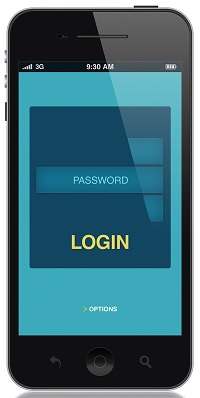New application could be a step toward Starbucks expanding the availability of its mobile commerce technology
Starbucks has released a new application for the iOS platform that could serve as a stepping stone for the company’s future mobile commerce endeavors. The company has become a major player in the mobile commerce sector thanks to its partnership with payments processor Square. Currently, Starbucks in the mobile commerce space are restricted to its family of stores, but the company does have plans to expand beyond its own stores in the future, possibly licensing off its mobile payments technology.
App allows users to tip baristas from their mobile device
The application allows consumers to tip their baristas at Starbucks stores from a mobile device. The app is meant to work alongside Starbucks’ existing mobile commerce services, allowing consumers more flexibility in the way they interact with the company and its employees. According to Starbucks, approximately 14% of all of its in-store transactions now come from mobile devices. The company has been quick to praise mobile commerce and has begun taking steps to help other organizations embrace the mobile sector more effectively.
Security continues to be an issue for many consumers
 While Starbucks have found significant success in its mobile commerce efforts, many consumers are still wary of the concept of mobile payments. There are security issues that exist in the mobile field that have yet to be adequately addressed by companies participating therein. The security of financial information is a priority for many consumers, and the lack of security that many mobile commerce platforms offer has become a problematic issue for consumers.
While Starbucks have found significant success in its mobile commerce efforts, many consumers are still wary of the concept of mobile payments. There are security issues that exist in the mobile field that have yet to be adequately addressed by companies participating therein. The security of financial information is a priority for many consumers, and the lack of security that many mobile commerce platforms offer has become a problematic issue for consumers.
Starbucks could help assuage security issues in the mobile commerce field with its mobile payments technology
Starbucks has managed to provide a service that consumers feel comfortable with using. The company may be able to help address some of the security issues that exist in the mobile commerce field by making its own mobile payments technology more available to other companies. Starbucks currently has tentative plans to license out its technology, but exactly when this will happen is unclear at this time.
This, according to predictions that have been released by Symantec.
If security firm, Symantec, is correct, then wearable technology such as smartwatches could soon mean that the need for us to try to remember a long list of different ever-changing logins and passwords could come to an end.
While mobile devices have previously been associated with low security, they could soon be giving protection a boost.
Mobile security has always been something that has made users feel a little bit leery, and has held back mobile payments and commerce from becoming reaching its true potential. However, wearable technology such as smartwatches, augmented reality glasses, and other wearables may one day make it possible for us to shake our reliance on password protection. They may currently be associated with privacy violations and hacking, but they also hold the ability to function with more accurate security protocols than password protection.
The boost that wearable technology could give to confidence in mobile security could be considerable.
Symantec released its predictions at the Wearable Technology Show, where Sian John, a technical specialist, called today’s password protection “frankly rubbish”. It was also added that the only reason that they are still being used is because they are user friendly compared to the alternatives that have been available until now.
John went on to explain that Symantec is currently investigating ways that wearables and other tech can provide a more practical and engaging mechanism for authentication. She also stated that by working collaboratively with the IT industry with regards to security standards, it could soon become possible for devices of all forms and from all brands to be able to communicate with each other in order to verify that someone is who he or she claims to be.
She said that “If you’ve got collaboration, you can end up with a sort of personal area network. If you’ve got your phone, your Fitbit and your Google Glass all in the same place, the actual proximity of those things can help us know that it’s you.”
At the same time, she also said that this sort of wearable technology remains in its very earliest forms and that these security solutions shouldn’t be expected to be developed tomorrow. The reason is that some time will be needed before it will be made possible for this universal form of authentication infrastructure to actually become affordable.
 While Starbucks have found significant success in its mobile commerce efforts, many consumers are still wary of the concept of mobile payments. There are security issues that exist in the mobile field that have yet to be adequately addressed by companies participating therein. The security of financial information is a priority for many consumers, and the lack of security that many mobile commerce platforms offer has become a problematic issue for consumers.
While Starbucks have found significant success in its mobile commerce efforts, many consumers are still wary of the concept of mobile payments. There are security issues that exist in the mobile field that have yet to be adequately addressed by companies participating therein. The security of financial information is a priority for many consumers, and the lack of security that many mobile commerce platforms offer has become a problematic issue for consumers.

